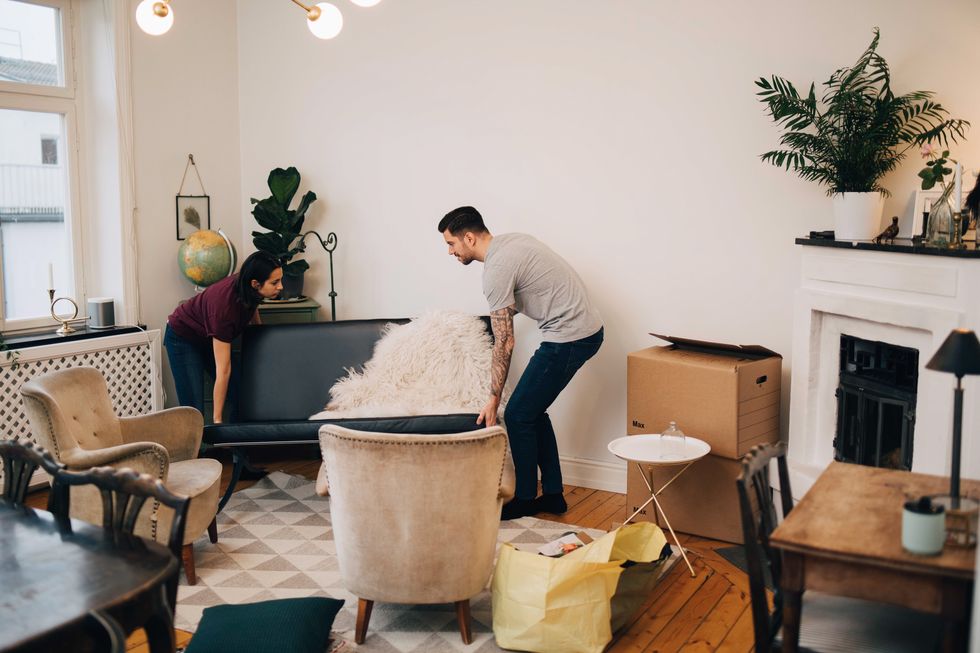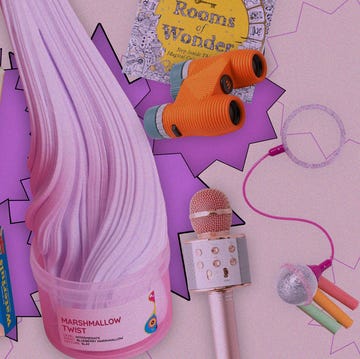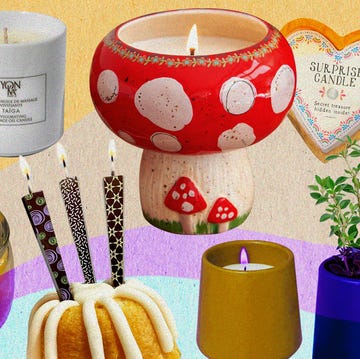Traditionally, home is the place where we rest, regenerate, and reconnect with our loved ones. Homes hold our artifacts and harbor our emotions, from happiness and sadness to everything in between. But when the pandemic came along, the purpose of our homes rapidly evolved, colossally changing how we interact with and what we put inside our living spaces.
“The pandemic made our homes our entire worlds,” says Rebecca Gitana, an interior designer and the creator of the series Healing Through the Home. “They became our work space, gym space, entertainment venues, counseling offices. All of the things that we experienced outside became part of the home energy.”
Many of us have experienced monumental changes firsthand at home, from transforming our houses into live-work-everything atmospheres to reshaping our environments because of major life changes like births, deaths, marriages, and divorces. As we emerge from our pandemic cocoons, the question is: What role will our homes serve now? With people going back into offices and daily routines forever altered, how do we reclaim our homes?
“Taking time to rearrange our homes, creating calming and useful spaces, and being intentional in the products we pick is a huge part of our overall mental and physical wellness,” says Connecticut-based therapist Sarah Fogel, who adds that even small changes like rearranging furniture, painting, and adding new photos can make homes feel fresh and prepare us for the next phase of our lives.
Here are four tips for redefining our living environments.
Show gratitude to your space
During the pandemic, kitchen tables doubled as desks. Hand weights, resistance bands, and yoga mats became common objects in living rooms. Ovens witnessed never-before-seen culinary trends, from baking sourdough to making that baked feta pasta dish from TikTok. Throughout the pandemic, our homes worked overtime and became incredibly versatile.
“When we think about reclaiming our home’s spaces, the first thing we should do is come into gratitude,” Gitana says. “Now is a beautiful time to honor the space that has contained you and that has been your shelter in this really big storm.”
Showing gratitude can take many forms: It can simply be feeling thankful for having a safe shelter. Or maybe it’s reframing the language you use to refer to those early days of the pandemic — an extended retreat instead of a lockdown, for instance. For tidying expert Marie Kondo, gratitude is expressed by announcing, “I’m home,” when she unlocks her door, a concept that resonated with her Twitter followers, who replied with their own rituals like exhaling or saying, “Peace be to this house,” when they return home.
Remove the unnecessary
The next phase of reclaiming your home is to take inventory of what you’ve been holding on to during the pandemic that you no longer need, and then start clearing away the clutter, Gitana says. As you do, think about how your next chapter will look. If you’re going back into an office, you could pull your work clothes out from the back of the closet and try things on to determine which items to keep.
Decluttering, Gitana says, creates a lighter environment and makes space for new opportunities to come into our homes. Plus, items you give away could be a blessing for someone else. “I call my home my mothership,” she says. “I think to myself: ‘For this next journey that I’m going to be on, what do I want to keep? And what do I want to let go of so I can fly lighter and higher?’”
Create an atmosphere you love
Adjust your space to the life you want to live next, Gitana recommends. If a double monitor and office supplies were taking up an extra room, but your work-from-home days are coming to an end, consider transforming that Zoom command center into an art studio, a workout room, or a zen retreat to practice yoga or meditation. “Look at your space, and consider the activities and experiences you want to have,” Gitana suggests, “then curate your home environment to fit your needs.”
Similarly, if you adopted a new hobby during the pandemic that’s now a part of your lifestyle, consider changing up your home to accommodate it. For example, cooking, baking, fermenting, canning, and gardening are more popular than ever before, according to Lisa Wirth, an interior designer and the head of design and trade at Beam, a design-build marketplace for home remodels. As such, kitchens are being reimagined to support these specialist hobbies with new technologies like LED grow lights and hydroponic gardens integrated directly into spaces.
Wirth also notes that the pandemic puppy boom and an increased concern for cleanliness and personal care are also influencing home redesigns, inspiring many to create pet-washing stations and mudroom-like dedicated areas to shed shoes and outerwear for a tidier transition indoors.
Make it personal
During the pandemic as we socially distanced, we learned the importance of creating spaces that made us happy rather than impressing others. As you curate your home, Gitana suggests, incorporate elements that soothe you and inspire happiness. That could be travel tchotchkes that remind you of how sunshine feels on your face or elements from nature like crystals and houseplants.
Alexandra Davin, a co-founder of online design school Clairrow, notes that she’s seen a shift away from sleek, minimal designs that have been popular over the last few decades. Instead, people are opting for cozier spaces with color palettes incorporating greens, blues, browns, and other nature-inspired hues. “It’s about creating a sense of peace,” she says, “a safe retreat that recharges you by simply being in your home.”
Brittany Anas is a Denver-based writer specializing in travel, health, food, and adventure. She has contributed to Women’s Health, Men’s Journal, TripSavvy, Apartment Therapy, Denver Life, and USA Today. Follow her on Twitter @brittanyanas.














